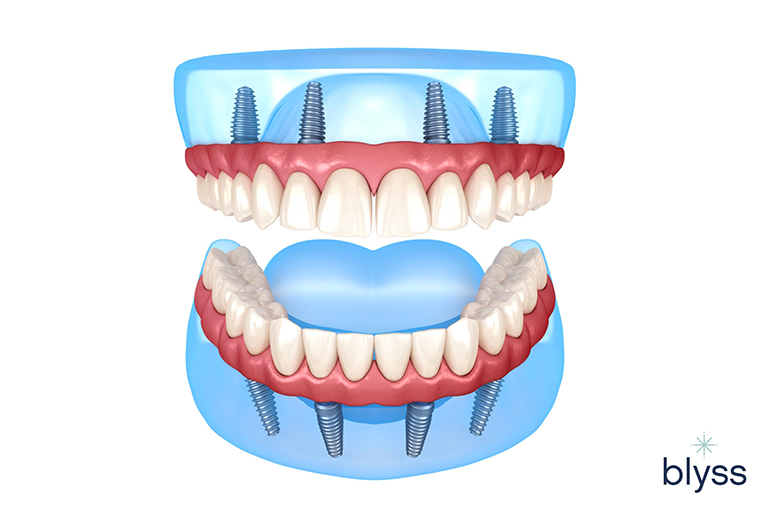Dental Sense Can Be Fun For Anyone
Dental Sense Can Be Fun For Anyone
Blog Article
See This Report about Dental Sense
Table of Contents6 Simple Techniques For Dental SenseThe smart Trick of Dental Sense That Nobody is Talking AboutGet This Report on Dental SenseDental Sense Can Be Fun For Everyone
are clinical tools operatively dental implanted into the jaw to recover an individual's capability to chew or their appearance. They offer support for man-made (phony) teeth, such as crowns, bridges, or dentures. When a tooth is lost as a result of injury or condition, an individual can experience difficulties such as fast bone loss, faulty speech, or modifications to chewing patterns that cause pain.Dental implant systems contain an oral implant body and dental implant joint and may also consist of an abutment fixation screw. Root canal procedure. The oral implant body is surgically placed in the jawbone instead of the tooth's root. The oral implant abutment is usually connected to the implant body by the joint addiction screw and prolongs through gum tissues right into the mouth to sustain the affixed man-made teeth
(https://anotepad.com/note/read/pydwx7ht)Structure of The Oral Implant System selecting dental implants, speak to your dental company regarding the prospective benefits and risks, and whether you are a prospect for the treatment. Points to take into consideration: Your overall health is an essential factor in identifying whether you are a good prospect for oral implants, how much time it will take to recover, and how much time the implant might remain in area.
Smoking might impact the healing process and lower the lasting success of the dental implant. The healing process for the dental implant body might take several months or longer, throughout which time you typically have a temporary joint in location of the tooth. the oral implant treatment: Thoroughly follow the oral hygiene guidelines provided to you by your oral supplier.
How Dental Sense can Save You Time, Stress, and Money.
Implant failure can cause the need for one more operation to deal with or change the dental implant system. Restores the capacity to eat Brings back aesthetic appearance Assists maintain the jawbone from reducing because of bone loss Preserves the health and wellness of the bordering bone and gums Helps maintain surrounding (close-by) teeth secure Improves quality of life Damage to bordering natural teeth throughout dental implant positioning Injury to the surrounding cells throughout surgery, such as sinus perforation Injury during surgical treatment (for instance, crack of bordering jawbone) Inadequate function, such as seeming like the teeth do not attack with each other usually A feeling that the tooth hangs or turning in location resulting from a joint screw loosening Implant body failing (looseness of the dental implant body) due to systemic infection, which may be more likely in people with unrestrained diabetes because of regional infection in bone and periodontals sustaining the implant body due to delayed healing, which may be most likely in patients who smoke Problem cleaning the gum tissues around the dental implant, resulting in bad dental health Untreated periodontal illness Post-surgical pins and needles as a result of nerve impingement or damages Always inform healthcare companies and imaging professionals that you have oral implants before any type of magnetic vibration imaging (MRI) or x-ray treatments.
FDA is not conscious of any type of unfavorable events reported for MRI or x-ray treatments with dental implants. Oral implants systems are normally constructed from products that adhere to worldwide agreement requirements of the International Company for Standardization (ISO) or ASTM International. These requirements have details of what makes a safe product.

An oral implant is a structure that replaces a missing out on tooth. With screw-like tools, the specialist inserts an implant right into the jawbone, and it acts as a support for a man-made tooth, called a crown.
A Biased View of Dental Sense
Some people are not eligible for dental implant surgical procedure. It is for dental cosmetic surgeons to operate individuals with: severe illnessuncontrollable metabolic diseasebone or soft tissue disease or infectionIf these issues are resolved, an individual can have the surgical procedure. In, dental surgeons avoid from operating people with: If individuals with any one of the above undergo dental implant surgical treatment, there is a greater threat of the implant falling short.

Dental implant surgical treatment is a customized procedure. Give you time to recover. Affix the article and last crown, bridge or denture.
Next off, your doctor will thoroughly put the dental implant into your jaw. Your surgeon will certainly rearrange your gum tissues and shut the laceration with stitches. If your dental implant is near the front of your mouth, your dental practitioner will make a short-term tooth for you to put on up until you heal. In this way, you won't have a space in your smile while you recoup.
The Of Dental Sense
During the healing stage, your jawbone ought to fuse to the dental implant. This process can take anywhere from 3 to 9 months.
Once your dental implant heals, your dental professional can affix the abutment (little connector article) and your last remediation (crown, bridge or denture). This generally takes regarding one hour to finish and may need a 2nd minor surgical procedure. You shouldn't feel any type of discomfort during your dental implant treatment due to the fact that your copyright will make use of drug to numb your gums.
Report this page